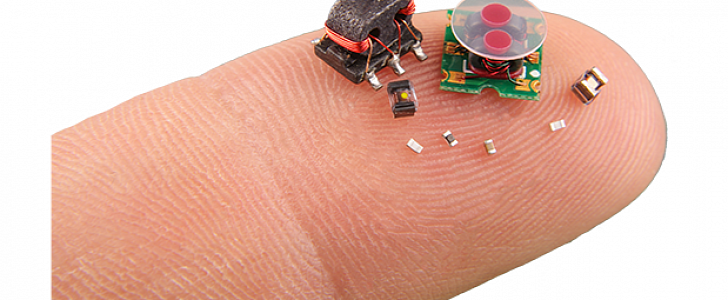Using robots and machinery to dig out and save people following major disasters is not a new idea. But when thinking of using machinery and robots for this purpose, most of us think BIG.
DARPA, an agency of people accustomed to thinging outside of the box, is going SMALL. Tiny small, to be precise. Because you can’t dig someone out if you don’t know where they are, now can you?
There are currently several solutions used by rescuers to find people trapped under rubble following earthquakes and other calamities. But none of them come as a swarm of tiny robots that can navigate through the rubble and enter highly unstable areas to take a looksie.
“Whether in a natural disaster scenario, a search and rescue mission, a hazardous environment, or other critical relief situation, robots have the potential to provide much needed aide and support,” said in a statement Dr. Ronald Polcawich, DARPA program manager.
“However, there are a number of environments that are inaccessible for larger robotic platforms. Smaller robotics systems could provide significant aide, but shrinking down these platforms requires significant advancement of the underlying technology.”
Officially, DARPA classifies the robots it is working on as part of the micro-to-milli robotic family. They are being developed under the SHRIMP program: SHort-Range Independent Microrobotic Platforms, announced this week by DARPA and open to all teams interested in taking part.
The good news for the DARPA engineers researching micro-robots is that the advancements made in the realm of microelectromechanical systems (MEMS) do make such a technology feasible. The bad news is that the lack of solutions for miniaturizing power, navigation and control systems makes SHRIMPS utterly useless at this point.
The goal of the SHRIMP program is to solve those issues and create tiny machines for actual use in natural and critical disaster scenarios. Researchers will work on developing new actuator materials and mechanisms as well as power storage components.
The full description of the DARPA SHRIMP program can be found at the following link.
There are currently several solutions used by rescuers to find people trapped under rubble following earthquakes and other calamities. But none of them come as a swarm of tiny robots that can navigate through the rubble and enter highly unstable areas to take a looksie.
“Whether in a natural disaster scenario, a search and rescue mission, a hazardous environment, or other critical relief situation, robots have the potential to provide much needed aide and support,” said in a statement Dr. Ronald Polcawich, DARPA program manager.
“However, there are a number of environments that are inaccessible for larger robotic platforms. Smaller robotics systems could provide significant aide, but shrinking down these platforms requires significant advancement of the underlying technology.”
Officially, DARPA classifies the robots it is working on as part of the micro-to-milli robotic family. They are being developed under the SHRIMP program: SHort-Range Independent Microrobotic Platforms, announced this week by DARPA and open to all teams interested in taking part.
The good news for the DARPA engineers researching micro-robots is that the advancements made in the realm of microelectromechanical systems (MEMS) do make such a technology feasible. The bad news is that the lack of solutions for miniaturizing power, navigation and control systems makes SHRIMPS utterly useless at this point.
The goal of the SHRIMP program is to solve those issues and create tiny machines for actual use in natural and critical disaster scenarios. Researchers will work on developing new actuator materials and mechanisms as well as power storage components.
The full description of the DARPA SHRIMP program can be found at the following link.

